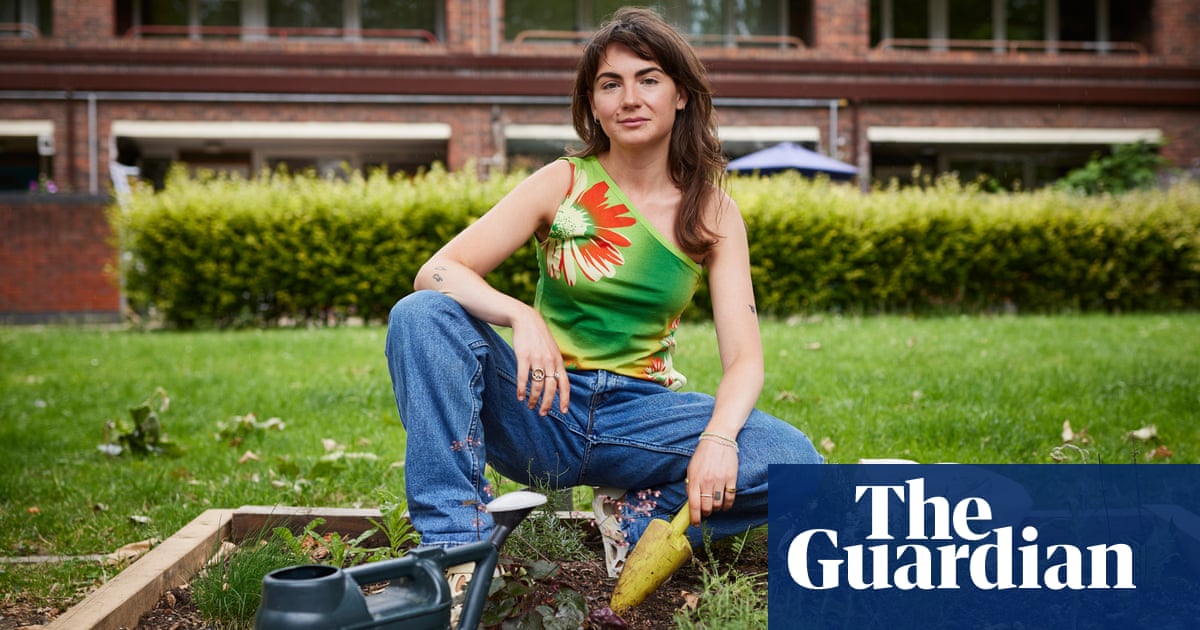
In a prehistoric bog where iguanodons once roamed and the early Britons first smelted ore into iron, what looks like a tiny orange candle peeps through the mire. It sends my companion into a paroxysm of joy.
“That’s good! That’s new!”
The candle belongs to a luminous fungus, Mitrula paludosa, otherwise known as bog beacon that is thinly scattered in the swampy habitat of the Sussex Weald. The exclamation – accompanied by an expletive – belongs to Dave Bangs, who, at 70, is perhaps Britain’s most enduring guerrilla botanist.
The find is one of many illicit discoveries documented by Bangs. For nearly six decades he has scoured the Sussex countryside for hidden ecological treasures, unearthing the neglected and endangered flora behind its fences. His field surveys have culminated in three books, a video and, in July, the basis of one of the largest mass trespasses in the UK in recent years.
I meet Bangs off the train at Balcombe for what he promises will be “a real cook’s tour” of a countryside few are permitted to see. Tall, sprightly with strong features, Bangs has something of the iguanodon about him. His shredded Barbour jacket is clearly accustomed to a life spent in dispute with barbed wire and bramble. “We’ll have to move fast,” he says. “The sites are all off-piste so we might be challenged – but it’s unlikely.”
Heavily annotated Ordnance Survey maps are dug out from an old satchel. Land ownership in England is notoriously inscrutable, but even a cursory look makes the reality clear: on almost every side we are surrounded by wooded estates that we are forbidden to enter. Together they form the Worth Forest, which in Bangs’s view ought to bear the same relationship to Crawley as Epping Forest does to London: an open expanse of forest, available to all.
But whereas the latter was saved from enclosure in the 19th century by mass protests, Worth is divided into a series of large estates. “They’re fiercely private, all of them, and completely moronic about nature conservation. I’m sure they’d deny that furiously. But they fucking are.”
In contrast to some conservationists, who believe the best way to protect nature is to keep people out of it, Bangs argues that access is crucial to protecting such landscapes. “Because no one knows it, no one loves it, and if no one loves it no one is going to fight for it,” he says.
He believes most environmental damage occurs in the 92% of the country the public is forbidden to enter – deepening an alienation from nature that makes it harder to save what remains, or even understand what is being lost.
We set off up a lane towards one of the estates looking for a place to hop over the fence. Bangs drops his voice to a conspiratorial whisper. “I’ll just take my hat off … I wear it an awful lot and it’s such an identifier.” He has been investigating the area for more than 30 years, since learning of two ancient woodlands that were clear-felled by estate owners in the preceding decades. He has no doubt the situation will only get worse. “In fact, on some estates it already has,” he says.
North of where we stand, a new Center Parcs development is being planned that will cover hundreds of acres of the Sussex woodland. Several charities, including the Woodland Trust, countryside charity CPRE Sussex and the RSPB this week warned that if the project went ahead it would “tear the heart out of Oldhouse Warren’s irreplaceable ancient woodland … resulting in irreversible loss of habitat for wildlife”.
We spot a covered area behind a bush and mount the fence. Bangs is well prepared. He extracts a piece of tarpaulin from his bag and folds it neatly over the barbed wire, overcoming the barrier with an elegant two-step.
The wood we enter is a tangle of overgrown rhododendrons left unchecked by the landowners and steadily choking the understory of plants growing beneath the tree canopy. First, we discover the bog beacon by a trickling gill. Then, on the ridge above, one of the giant ancient trees Bangs had pointed out on the map.
“Good, she’s all right,” says Bangs, as though speaking of an old friend. The trunk, a fusion of several trees planted in a cluster, spans the width of a small car. It is surrounded by piles of rusting rubbish.
Bangs has witnessed worse. In the adjacent wood, already devastated by a conifer plantation, he discovered that several miles of heathy rides – relict slivers of ancient open forest habitat – had been covered over with chalk-and-rubble tracks, stuffed with bits of smashed sink and toilet ceramic. The alkaline chalk covers the acidic soil, eliminating wildflowers such as bog pimpernel, ivy-leaved bellflower, pale sedge and marsh violet.
It was the discovery of these, and other threats to his native downland, which motivated Bangs to co-found Landscapes of Freedom. This July they organised, in collaboration with the Right to Roam campaign, a trespass of more than 300 people to Pangdean Bottom, a beautiful coomb, or valley, a few miles from the edge of Brighton. Owned by Brighton and Hove city council but let to a tenant farmer who uses it for grazing and pheasant shooting, the ancient down pasture has suffered, argue campaigners, with woodland and scrub needed by pheasants superseding once botanically complex, flowery turf.
Botany for Bangs is not simply an exercise in collection, preservation or delight, but a way to transform our understanding of the landscape. Seen through his eyes, a stitchwort (Stellaria graminea) in a field of bland pasture hints at the survival of a richer, wilder landscape lurking underneath. Shining hookeria, a delicate moss, reveals the ghost of an ancient gill. This knowledge, he believes, gives trespassers a moral authority – as nature’s guardians, whistleblowers and advocates – counteracting the tendency to treat them as invaders of the land, or as a danger to it.
“Because I know this countryside so well, I can talk with authority about it to anyone. If a landowner comes and challenges me, it’s very often the case that I know a lot more than they do about their site,” he says. “You can be as mad as you like, but they can’t deny you that authority.”
We end the day traversing two other estates. The grounds belong to a country manor that has been turned into a wedding venue, where a sprawl of steel fences mar what was once part of the old Balcombe Down, “a sort of playground for local people, you know? A magic wood. Now it’s just like a zoo.”
Then, across a railway bridge dotted with sweet briar – “it has the most fantastic fragrance” – a new estate of mysterious woodland. Chest-high wood ant nests dot the forest floor. The discovery of lily of the valley elicits more expletive-laden yelps from Bangs. It is “vanishingly rare” in Sussex, he says. We stop in the slanting light to take in the Wealden landscape in all its particularity; bog and gill, woodland and heath.
“You’re more or less looking at what the ancient peoples would have looked at. I love it … And no one knows about it. No one comes here. Absolutely no one. And yet you’re only about five miles from bloody Crawley.”












